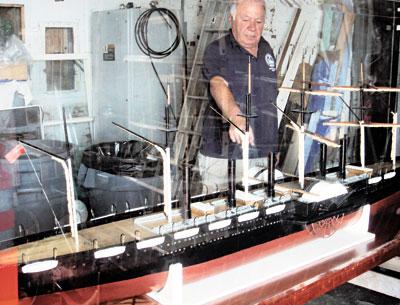Town Trustees vs. Georgica Association
Town Trustees vs. Georgica Association
Faced with the possibility that the Georgica Association will deny them access to Georgica Pond so they can periodically open the pond to the sea, the East Hampton Town Trustees are contemplating a license agreement with the association, and will discuss it at their meeting on Tuesday night.
The trustees have not been comfortable diluting their authority in the past. The current standoff between the two groups — perhaps the oldest public/private-rights debate in town — could be decided by Mother Nature.
The beach between Beach Lane in Wainscott and the narrow isthmus that separates the coastal pond and the sea is one of the few beaches in East Hampton whose private ownership predates the formation, in 1686, of the town trustees. Their founding Dongan Patent declared beaches to be common land.
Since that time, trustees have opened the pond in the spring and fall, as did their Native American predecessors, to allow spawning fish to enter and exit. More recently, high water levels have occasionally flooded pondfront properties, making the biannual openings, or lettings, popular among pondside homeowners. And, trustees have sold sand excavated from a sand flat at the pond’s mouth to property owners who wish to rebuild eroded beach and duneland. So by not allowing trustee access to the Georgica Pond gut, the association has presented some of its own members with a quandary.
The presence of equipment used in the excavations, and the stockpiling of sand on Georgica Beach, as well as possible liabilities associated with the lettings, prompted the association’s access ban, according to Mark Graham, its president. Mr. Graham suggested that a license agreement would settle issues that the association’s legal team identified as “price, insurance, and indemnification,” during a phone interview last week.
The trustees can attempt to access the pond from West End Road in East Hampton, across the public beach on the east side of the gut. Or, they can let the chips fall where they may by abiding by the association’s ban, in which case the pond could flood its banks. At their meeting last month, members said they would try to avoid the latter alternative in the interest of the pond’s health, but that the association may have tied their hands.
On the other hand, it would seem the association has tied its own hands, because only the trustees can authorize the opening of Georgica Pond.
John Courtney, the trustees’ attorney, said yesterday that this was not the first time the Georgica Association had asked the trustees to sign a license agreement involving the pond. The board had decided not to sign one in the past.
Mr. Courtney would not discuss a possible legal remedy to the standoff, other than to point to the ongoing court proceding in a case brought against the trustees by beachfront property owners on the ocean side of Napeague. The case, now in the State Supreme Court, involves a challenge to the trustees’ claim of public access.
The property owners’ request for summary judgment was denied earlier this year after Justice Melvyn Tannenbaum decided there were questions of fact that were not readily determined by law. One of the questions was whether the trustees had “proscriptive” rights to the beach, by virtue of its unobstructed public use for 10 years or more.
Trustees have been traversing Georgica Beach to open the pond for many decades.







